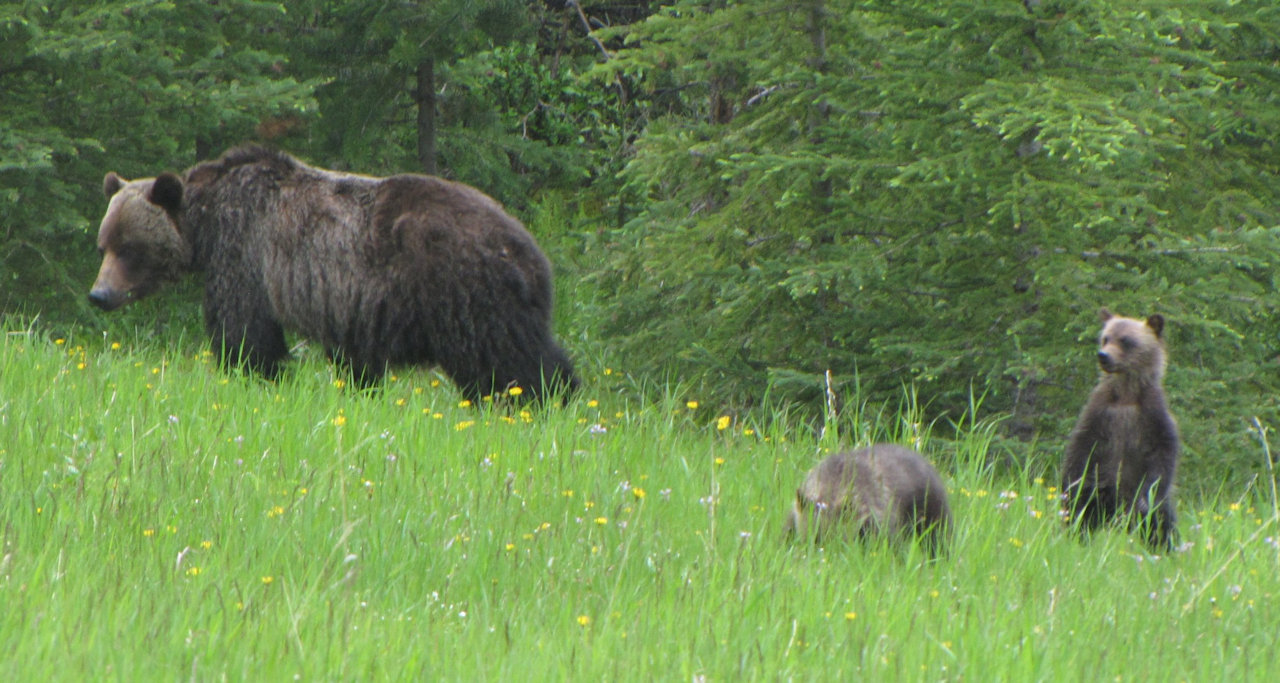As mentioned here three weeks ago, the affected states are already divvying up hunting quotas in anticipation of grizzly bear delisting in the Yellowstone region.
Brian Peck thinks this is a bad idea, stating his case in a sensible, non-confrontational op-ed in yesterday’s Daily Inter Lake.
Left unaddressed is the topic of trophy hunting, a hot button issue for conservationists and many tribes . . .
In recent weeks, area papers have run the article “States divvy up Yellowstone-area grizzly hunt,” noting that Wyoming will get 58 percent of the body count, Montana 34 percent, and Idaho 8 percent. With grizzlies still listed as “threatened,” and likely to remain so for years to come despite efforts by the U.S. Fish and Wildlife Service to prematurely delist them, it’s unseemly, irresponsible, and unnecessary for state wildlife agencies to begin dividing up the “killing fields” for this iconic species.
It’s important to remember that grizzlies are the slowest reproducing mammal in North America. As such, there is no biological “need” to ever hunt grizzlies for population control. In Yellowstone, it’s taken over 40 years for the population to increase from around 300 to last year’s estimate of 717. Not exactly a bear behind every tree.
OK, but how are we going to deal with “problem bears?” First, it’s important to realize that virtually all “problem bears” are caused by “problem people” and their bad behavior — for example, leaving bird feeders out from April to October and baiting bears to their deaths. Or leaving pet food on the deck, leftover burgers on the barbecue, unsecured horse feed, or tasty chickens in flimsy enclosures. Clean up our behavior and clean up the problem.
Second, a grizzly hunt is unlikely to target problem bears in people’s back yards or subdivisions because it’s too dangerous. And Fish, Wildlife and Parks can’t lead hunters to collared problem bears because it’s unethical and unsportsmanlike.
Finally, we already have the solution in the state’s Bear Conflict Resolution Specialists, who do a fabulous job through homeowner education, aversive conditioning of food-conditioned bears, and removing those whose bad habitats can’t be broken. However, we need to adequately fund and staff this vital program.
But don’t we need to hunt grizzlies to make them fear humans and avoid us? Nonsense. There’s no credible research to back up this claim. Properly conducted, ethical hunting of grizzlies doesn’t teach them to fear humans — it teaches them to be dead. And a dead bear tells no tales to his/her fellow grizzlies. It’s far more likely that grizzlies learn to fear/avoid humans by observing the thousands of big game hunters in the woods each fall.
So, if grizzlies don’t “need” to be hunted, there’s already a solution to problem bears; and if hunting grizzlies doesn’t instill fear in them, why are the states so adamant about divvying up the killing fields and starting a hunt in Greater Yellowstone?
State wildlife agencies get nearly all of their revenue from the sale of hunting, fishing, and trapping licenses and were set up to manage wildlife populations through regulated “harvest” (killing). It’s part of their cultural history and ingrained in their management DNA.
Yet with grizzlies, and particularly the Greater Yellowstone bears, state wildlife agencies need to understand they’re playing in a whole new game where the old historic ways of doing business do not apply. States that insist on killing these iconic bears that millions of Americans associate with Yellowstone National Park itself, will quickly find themselves in a firestorm of public disapproval that will not only target them, but hunting itself. Time to think outside the box.
Brian Peck, of Columbia Falls, is an independent wildlife consultant.
